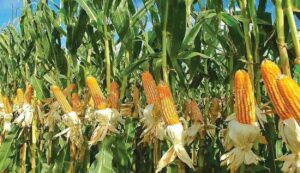Maize Farming: Adopt these best methods to keep the maize crop safe in cold weather
Maize Farming: Given the growing impact of cold, Bihar Agricultural University, Sabour, has released specific guidance for maize producers. The early maize crop, which was sowed from October 15 to November 1, is now in the blossoming stage, but the dropping temperatures may hinder the pollination and fertilization processes.

Cold may have negative impacts on the crop, including irregular crop growth and yellowing or purpling of the leaves. Farmers have been encouraged to appropriately utilize fertilizer and light irrigation to prevent these unwanted effects. These recommendations may help farmers prevent productivity losses brought on by cold weather.
Low temperatures’ effects on crops
purple or yellowing of the leaves.
Abnormal crop growth.
Issues with fertilization and pollination might impact the grain formation process.
The temperature is predicted to stay below 10 degrees Celsius in the next days, which might be detrimental to the maize crop, according to experts.
Tips for farmers
The following actions may be taken by farmers to shield their crops from the damaging effects of cold:
1. Use a little irrigation:
To maintain a steady soil temperature, use light watering.
Steer clear of waterlogging.
2. Apply fertilizer:
Apply magnesium sulfate (1.5 kg/acre) and NPK (19:19:19) after light watering.
Use 10 kg of sulfur and 30 kg of urea if the crop is at the silking stage.
Apply 10 kg of potash fertilizer per acre as well.
Why are these actions required?
By maintaining the soil’s warmth, light watering lessens the impact of cold.
When fertilizer is applied correctly, it gives the crop the nourishment it needs and shields it from the cold.
It is recommended that farmers take these steps as soon as possible to shield their crops from the damaging effects of cold and prevent productivity declines.

